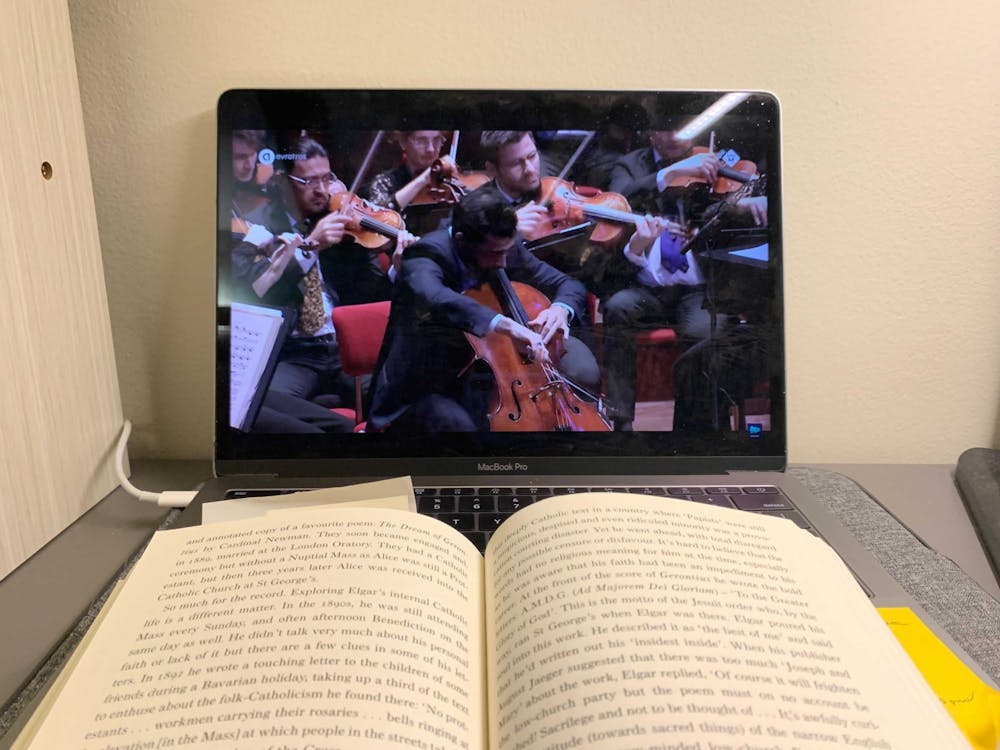It’s reading period. You already know what that means: stress-induced tears, both internal and external, late night cramming, and a whole lot of — you guessed it — reading. With all the work that has to be done this week, it’s easy to feel overwhelmed. Whether it’s because you need an epic soundtrack to help you focus or simply because you’re sick of Lofi Girl, I’ve got you covered! Here are a few of my favorite classical bangers to help you get by until winter break.
One reason why people listen to Lo-fi when studying is because the repetition of the beat keeps them from getting distracted; understandably, sometimes all you need is something consistent to help you focus, and Bolero does just that. The piece begins with a triplet rhythm played on the snare drum — a motif that is present throughout the entire piece. On top of this foundation, the flute introduces a simple melody that is passed around the orchestra. While Bolero may seem repetitive, it is not boring. Over its 14-minute duration, the piece continuously expands in volume and thickens in texture; however, this build-up is gradual, meaning it won’t distract you as you're grinding out those problem sets. If you’re someone whose focus flies out the window easily, definitely give this piece a try!
“Variations on a Rococo Theme” — Pyotr Ilyich Tchaikovsky
If you’re looking for something consistent, but Bolero was a little too repetitive for you, then this piece is for you. “Variations” begins by introducing a simple theme; here, the detached melody feels like a leisurely morning walk and creates a carefree atmosphere. With each variation, Tchaikovsky molds this theme to establish different moods; whether it’s through faster rhythms, embellishments, or varied articulation, Tchaikovsky shapes this humble melody into something fascinating. However, although each variation brings something new to the table, the core of the piece remains the same — no matter how wild Tchaikovsky’s flourishes are, or how emotionally intense some movements can be, the music always returns to the theme from the beginning. This piece is perfect for anyone who yearns for a little more excitement, but still wants some sense of familiarity.
“The Feeling of Coming Home” — Victor LaBozzetta III

Perhaps it’s a bit biased of me, as a percussionist, to suggest a percussion ensemble piece, but I promise this is worth a listen! The piece begins with the ocean drum, emulating the soft crashing of the waves as a gentle and sporadic melody enters on the vibraphone and glockenspiel. Here, LaBozzetta uses space to create a tranquil atmosphere, perfect for allowing you to think as you’re writing those Dean’s Date essays. The marimba then fills in the gaps with a syncopated melody; although fuller in texture, the absence of battery percussion allows the piece to feel quite mellow still. With the addition of the cajon and tambourine, the ending of the piece builds to a solid groove that you’ll definitely enjoy jamming to — think of it as a 30-second study break as a reward for all the work you’ve put in.
“Arabesque No. 1” — Claude Debussy
Debussy’s piano pieces always put me at ease and this one is no exception. Rhythmically, Arabesque No. 1 uses eighth note triplets to create a flowing melody that is sure to ease your mind. My favorite parts of this piece, however, are when the right hand melody slowly climbs up in quarter notes. Here, Debussy creates tension and anticipation for the descent that is about to come, which makes it all the more satisfying. It almost feels like you’re teetering on the edge of a mountain before you let yourself free fall. Likewise, when you’re catching up on readings, these moments are bound to free your mind from any built-up tension.

“Violin Concerto No. 1 (mvt. 3)” — Max Bruch
While Bruch’s entire concerto is very beautiful, I especially think that the third movement is the ultimate piece to listen to as you study for your last final. Filled with flourishes and bright chords, the movement is bursting at the seams with energy, sure to give you that boost of determination to get through the concluding paragraph of the essay you’ve been mulling over for the past week straight. The middle section, although softer and more legato, features a steadily ascending melody, building towards the passionate return of the main theme. What I love most about this movement is how the melody is passed between the soloist and the orchestra: the orchestra reinforces the motif played by the violin, as if encouraging the soloist to keep trekking onward. With this soaring momentum, the piece ends triumphantly, the soloist and orchestra coming together. As you listen to this piece, I hope you feel equally triumphant in conquering your finals this semester!
Reading period is a stressful time for all of us. I hope these pieces can brighten your day, whether it’s by increasing your focus or simply providing a beautiful soundtrack as you study.
Kerrie Liang is a Contributing Writer for The Prospect at the ‘Prince.’ She can be reached at kerrie.liang@princeton.edu, or on Instagram at @kerrie.liang.








